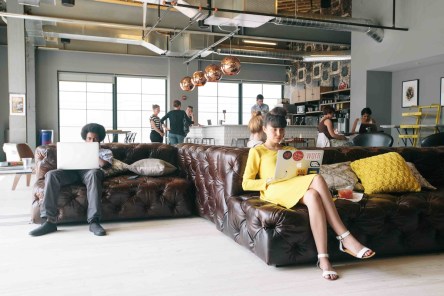What happens when interior design mimics software development and architecture merges with technology? For the founders of WeWork, the end result is a property management hybrid that owes more to start-ups than real estate agencies. With an estimated worth of $16 billion, founders Adam Neumann and Miguel McKelvey have managed to elevate the business of renting office space in a way that appeals to millennials and embraces the versatility and tech-savvy innovation of Silicon Valley. Unlike other workspace rental companies, WeWork aims to provide more than just a desk and some Wi-Fi. WeWork memberships provide a whole host of benefits. WeWork’s 50,000 members can expect “super-fast Internet,” cleaning services, on-site community managers, and free coffee, tea, fruit water and, of course, beer on tap – all for tiered fees ranging from $45 to $1000 per month. Tailor Made Office Space For quick deployment, uniformity is an essential aspect of the company’s business model. As it turns out though, a typical WeWork office is not so typical. The Williamsburg locale features all the accoutrements of the hipster lifestyle – craft beers, exposed brick, and wood paneling abound – but WeWork offices are customizable based on location and need. Customization is achieved through innovative use of Building Information Modeling (BIM). BIM trades blueprints for digital models. Through digitization, building designers can plan for the lifespan of a project, from construction to cost management and facility operations. The ability to adapt appealed to WeWork’s founders. After collaborating with architectural design firm Case on several WeWork locales, they eventually purchased the company. “When you go to a normal architecture firm they aren’t going to be innovative in terms of their systems,” McKelvey told Wired. “They’re not going to be thinking of the whole lifespan of this project, or how do...

